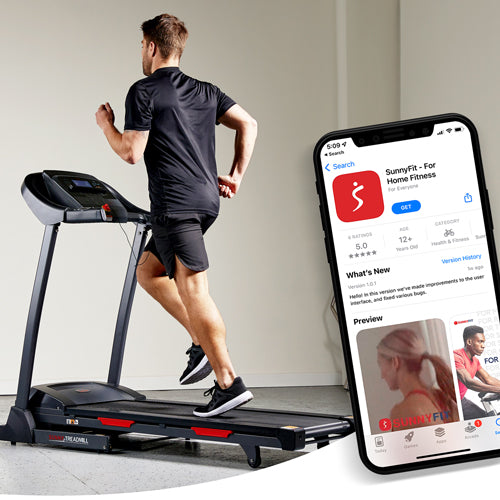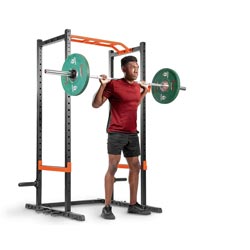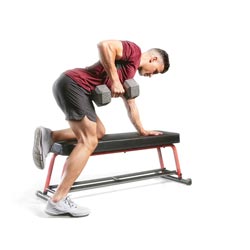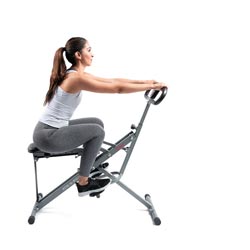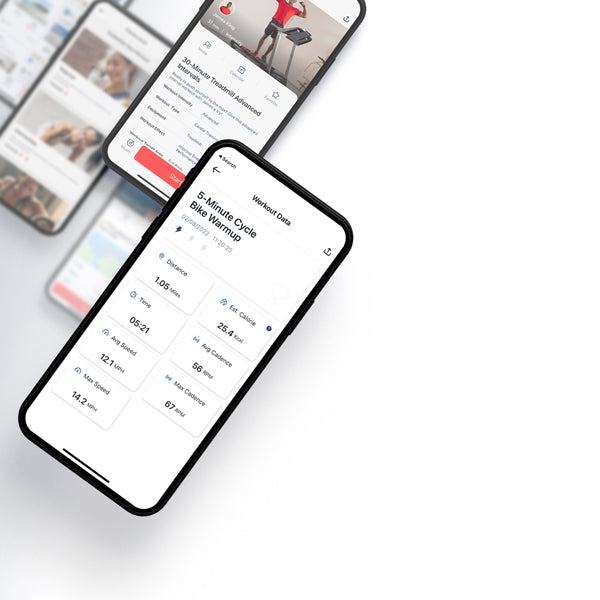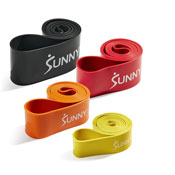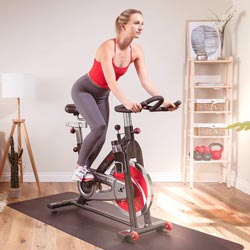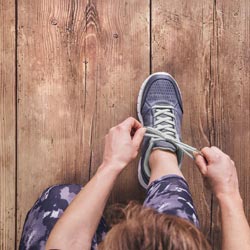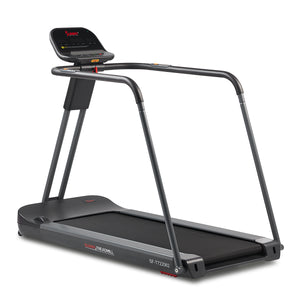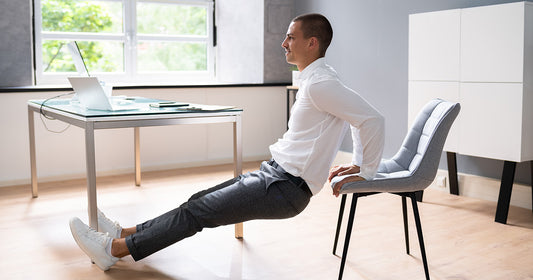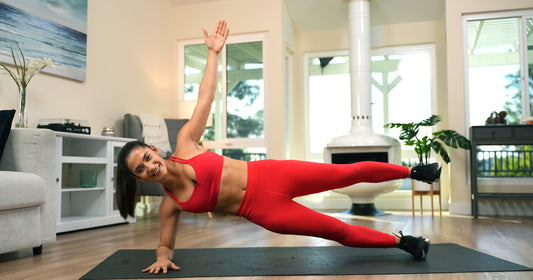When it comes to summer running, it's important to prioritize safety and find alternatives to outdoor jogging when the temperatures rise. Here are some tips to help you stay cool and keep moving all summer long!
1. Hydrate
Drink plenty of water before, during, and after your run to stay hydrated. Proper hydration is crucial when exercising in the summer heat, especially when you are running. Here are some tips to help you stay properly hydrated before, during, and after your run:
Before your run
- Pre-hydrate: Drink water or a sports drink at least 1-2 hours before your run to ensure you start off well-hydrated.(1)
- Avoid excessive caffeine and alcohol: These can increase dehydration, so it's best to limit their consumption before your run.
- Monitor urine color: Check the color of your urine. If it's pale yellow, you're likely well-hydrated. If it's darker, drink more fluids before starting your run.(2)
During Your Run
- Drink fluids regularly: Aim to drink water or a sports drink every 15-20 minutes during your run, especially if it's longer than 30 minutes. Sip small amounts to avoid discomfort.
- Consider a electrolyte replacement: If you sweat heavily or run for more than an hour, consider consuming a sports drink or electrolyte-rich fluids to replenish the electrolytes lost through sweat.
- Use a hydration pack or belt: Carrying water with you during your run is convenient and ensures you have access to fluids whenever needed.
After Your Run
- Rehydrate immediately: Drink fluids, preferably water or a sports drink, within 30 minutes of completing your run to replenish lost fluids.
- Monitor urine color: Check your urine color after your run. If it's pale yellow, you're properly hydrated. Darker urine may indicate the need for further hydration.(2)
- Consider a post-run snack: Consuming foods with high water content, such as fruits or vegetables, can aid in rehydration.
Additional tips
- Listen to your body: Pay attention to signs of thirst or dehydration, such as dry mouth, dizziness, or fatigue. Take breaks and drink fluids when needed.
- Plan your route strategically: If possible, choose routes with water fountains or access to hydration stations to refill your water supply during your run.
- Be mindful of the heat: Avoid running during the hottest times of the day and choose shaded or cooler routes when possible.
Everyone's hydration needs may vary, so adjust your fluid intake based on factors like the intensity and duration of your run, sweat rate, and individual tolerance. Stay consistent with your hydration practices to maintain optimal performance and prevent dehydration.
2. Time Your Runs
Try to schedule your runs during the cooler parts of the day, such as early mornings or evenings. Avoid running during the hottest hours when the sun is at its peak.
When it comes to scheduling and staying on track with a running regimen during the summertime, here are some tips to help you:
- Choose the right time: Schedule your runs during cooler parts of the day, such as early morning or late evening, to avoid the peak heat. This will make your runs more comfortable and reduce the risk of heat-related illnesses.
- Plan your routes: Opt for shaded or tree-lined routes to minimize exposure to direct sunlight. Look for trails, parks, or running paths that offer natural shade or consider running in urban areas with taller buildings that can block the sun.
- Stay consistent: Establish a routine by setting specific days and times for your runs. Consistency is key to staying on track with your running regimen. Make it a priority and stick to your schedule as much as possible.
- Adjust your intensity: Be mindful of the heat and adjust your intensity accordingly. Running in high temperatures can be more challenging, so consider reducing your pace or incorporating walk breaks if needed. Listen to your body and don't push yourself too hard.(4)
- Buddy up or join a group: Running with a friend or joining a running group can provide motivation and make your runs more enjoyable. It can also help you stay accountable to your running schedule during the summer months.
- Be flexible with your schedule: If the weather is exceptionally hot or there's a heatwave warning, consider adjusting your running schedule or opting for indoor alternatives like treadmill running or indoor track workouts. Safety should always be a priority.
- Listen to your body: Pay attention to how your body feels during your runs. If you experience signs of heat exhaustion or heatstroke, such as dizziness, nausea, or confusion, stop running immediately, find shade, and hydrate. Seek medical attention if necessary.
- Enjoy the process: Running in the summer can be challenging, but it can also be rewarding. Embrace the opportunity to soak up the Vitamin D, enjoy the scenery, and appreciate the sense of accomplishment that comes with conquering your runs in the heat.
3. Dress Appropriately
Wear lightweight, breathable, and moisture-wicking clothing to help keep you cool. Opt for light colors that reflect sunlight instead of absorbing it. When it comes to dressing appropriately for running in the summer, here are some tips to help you stay cool and comfortable:
- Choose lightweight and breathable fabrics: Opt for moisture-wicking materials that allow sweat to evaporate quickly and keep you dry. Look for clothing made of synthetic fabrics like polyester or nylon, which are designed to wick away moisture from your skin.
- Wear light-colored clothing: Light-colored clothing reflects sunlight and helps to keep you cooler compared to dark-colored clothing, which tends to absorb heat. Choose white, pastel colors, or other light shades for your running attire.(3)
- Consider loose-fitting and airy clothing: Loose-fitting clothing allows for better airflow and ventilation, helping to keep you cool. Avoid tight or restrictive clothing that traps heat and moisture against your skin.(3)
- Opt for shorts or lightweight leggings: Choose shorts or lightweight leggings that are specifically designed for running in hot weather. Look for shorts with built-in liners or moisture-wicking properties. For leggings, opt for breathable and moisture-wicking materials.
- Wear moisture-wicking socks: Invest in moisture-wicking socks to keep your feet dry and prevent blisters. Avoid cotton socks as they tend to retain moisture and can cause discomfort during your run.
- Protect yourself from the sun: Don't forget to wear a hat or visor to shield your face from the sun's rays. Consider wearing sunglasses to protect your eyes from UV rays and to reduce glare. Apply sunscreen to any exposed skin to prevent sunburn.
- Choose the right footwear: Opt for lightweight, breathable running shoes that provide proper ventilation. Look for shoes with mesh uppers to allow your feet to breathe. Ensure your shoes provide adequate cushioning and support for your running style and foot type.
- Consider accessories: If you prefer to cover your arms, choose lightweight and breathable long-sleeve shirts or arm sleeves made of moisture-wicking fabric. You can also use a lightweight running vest or hydration pack to carry water and stay hydrated during your run.
- Dress in layers: If the weather is cooler in the early morning or late evening, consider dressing in layers that you can easily remove as your body warms up during the run. This way, you can adjust your clothing according to your comfort level.
Everyone’s preferences and comfort levels vary, so experiment and find what works best for you.
4. Protect Yourself From the Sun
A good idea is to look for running routes that provide shade, such as trails with tree cover or urban areas with tall buildings. This can help reduce exposure to direct sunlight and keep you cooler. Make sure to apply sunscreen with a high SPF to protect your skin from harmful UV rays. Wear a hat or visor and sunglasses to shield your face and eyes.
Protecting yourself from UV rays during summertime running is important because it:
- Prevents sunburn and discomfort
- Reduces the risk of skin damage and premature aging
- Lowers the risk of skin cancer
- Maintains overall skin health
- Protects the eyes from UV damage
- Helps regulate body temperature
- Enhances performance and focus
5. Transition to Treadmill Workouts
When the heat becomes unbearable, consider transitioning to indoor treadmill workouts. Sunny Health and Fitness provides an array of treadmills and cardio machines that can be purchased at reasonable prices and help you get through the hot summers. This provides a comfortable alternative while still allowing you to maintain your running routine. Here are a few fun treadmill workouts to try this summer:
- Interval training: Alternate between periods of high-intensity running and recovery periods of walking or slow jogging. This example beginner’s workout can help improve your speed and endurance.
- Minutes 1-3 walk at comfortable pace
- Minutes 4-6 walk at a fast pace
- Minutes 7-9 jog
- Minute 10-11 recovery walk at a comfortable pace
- Minute 12-13 jog
- Minute 13-15 Recovery light walk
- Incline workouts: Increase the incline on the treadmill to simulate uphill running. This engages different muscles and adds intensity to your workout. Here is an example workout anyone can try.
- Repeat this workout for 4 sets of:
- Minute 1, 0% incline low-intensity speed (aka baseline or recovery speed)
- Minute 2, 2-3% incline at moderate speed
- Minute 3, 4-5% incline at high to moderate speed
- Minute 4, 0% baseline
- Virtual running classes on the SunnyFit® App: Sunny’s virtual running video and audio classes make your treadmill workouts more engaging. These workouts provide immersive experiences, simulating outdoor runs in different locations.
Remember, safety should always be your top priority when running in the summer heat. By following these tips and exploring alternative workout options, you can stay cool and keep moving all summer long.


1. Casa, D. J., Stearns, R. L., Lopez, R. M., Ganio, M. S., McDermott, B. P., Walker Yeargin, S., Yamamoto, L. M., Mazerolle, S. M., Roti, M. W., Armstrong, L. E., & Maresh, C. M. (2010). Influence of Hydration on Physiological Function and Performance During Trail Running in the Heat. Journal of Athletic Training, 45(2), 147–156. https://doi.org/10.4085/1062-6050-45.2.147. Accessed 30 April 2024.
2. Armstrong, L. E., Maresh, C. M., Castellani, J. W., Bergeron, M. F., Kenefick, R. W., LaGasse, K. E., & Riebe, D. (1994). Urinary Indices of Hydration Status. International Journal of Sport Nutrition and Exercise Metabolism, 4(3), 265–279. https://doi.org/10.1123/ijsn.4.3.265. Accessed 30 April 2024.
3. What To Wear To Run In The Heat & Sun - Running Zeal. (2021, November 30). Www.runningzeal.com. https://www.runningzeal.com/running-in-hot-weather-attire/. Accessed 30 April 2024.
4. Armstrong, L. E., Casa, D. J., Millard-Stafford, M., Moran, D. S., Pyne, S. W., & Roberts, W. O. (2007). Exertional Heat Illness during Training and Competition. Medicine & Science in Sports & Exercise, 39(3), 556–572. https://doi.org/10.1249/mss.0b013e31802fa199. Accessed 30 April 2024.
